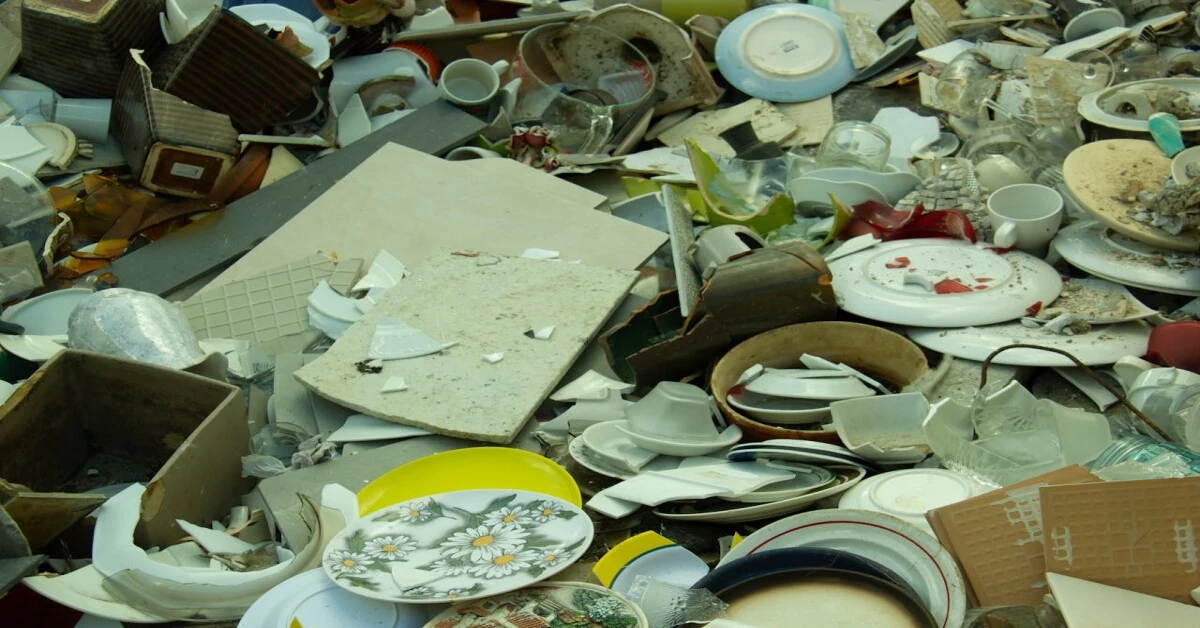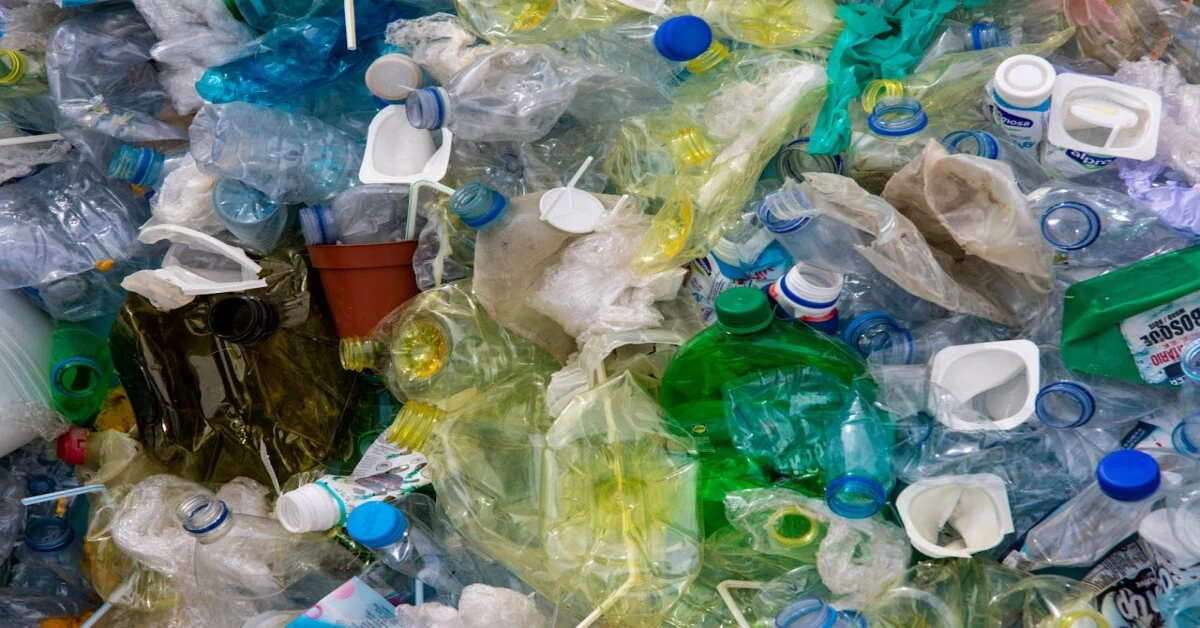Non-biodegradable waste is any material that does not break down naturally over time. Unlike food scraps or paper, which decompose, plastics, metals, and synthetic chemicals can persist for hundreds of years.
Understanding non-biodegradable waste and its effects is crucial as pollution from such waste harms ecosystems, wildlife, and human health. Every year, millions of tons of plastic enter oceans, threatening marine life and contaminating food chains.
This waste is everywhere—in landfills, streets, and water bodies. Items like plastic bottles, aluminium cans, and e-waste pile up because they resist decomposition. As a result, landfills overflow, toxic chemicals seep into soil and water, and air pollution increases. Without proper management, the situation will worsen.
However, solutions exist. Recycling, sustainable alternatives, and stricter waste policies can reduce its impact. By learning about non-biodegradable waste, we can make better choices and help protect our planet.
What is Non-Biodegradable Waste?
Non-biodegradable waste is waste that does not break down naturally over time. Unlike biodegradable materials, which decompose with the help of bacteria and fungi, non-biodegradable items remain in the environment for years or even centuries.
Plastics, metals, glass, and synthetic chemicals are common examples. These materials resist natural decay, leading to long-term pollution in landfills, oceans, and cities.
To understand the difference, consider a banana peel and a plastic bottle. The banana peel decomposes within weeks, enriching the soil with nutrients. The plastic bottle, however, may take over 400 years to break down, releasing harmful chemicals in the process.
This durability makes non-biodegradable waste a major environmental challenge. Proper management, recycling, and sustainable alternatives are crucial to reducing its harmful effects on nature and human health.
Types of Non-Biodegradable Waste
Non-biodegradable waste can be classified based on material and origin. Each type poses unique challenges to the environment and requires different disposal methods.
Plastic Waste
Plastics are one of the most common non-biodegradable materials found in landfills and oceans. Items like plastic bags, bottles, food packaging, and straws contribute to pollution. Microplastics, tiny plastic particles, contaminate water sources and harm marine life.
Metal Waste
Metals, including aluminum cans, steel scraps, and electronic waste (e-waste), take decades to decompose. Old batteries and discarded electronics release toxic chemicals like lead and mercury, polluting soil and water.
Glass and Ceramics
Glass bottles, jars, and ceramic materials do not decompose easily. Though recyclable, improper disposal leads to accumulation in landfills. Broken glass also poses safety hazards.
Chemical and Toxic Waste
Industrial chemicals, pesticides, and medical waste contribute to hazardous pollution. These substances contaminate soil, water, and air, causing health risks for humans and animals.
Proper waste management and sustainable alternatives can help reduce plastic pollution, electronic waste, and chemical contamination, making the environment cleaner and safer.

Classification of Non-Biodegradable Waste
Non-biodegradable waste is classified based on its source and persistence in the environment. Understanding these categories helps in managing waste effectively and reducing pollution.
Also Read: Comparison of Biodegradable and Non-Biodegradable Waste
Classification by Source
Non-biodegradable waste comes from different sectors, including:
Industrial Waste – Factories generate metals, chemical by-products, and plastic materials that take years to break down.
Household Waste– Everyday items like plastic bags, aluminium cans, and glass containers contribute to landfill build-up.
Medical Waste – Hospitals and clinics dispose of needles, syringes, and expired medicines, which can be hazardous.
E-Waste (Electronic Waste) – Discarded phones, computers, and batteries contain toxic metals like lead and mercury.
Classification by Persistence
Non-biodegradable waste is also classified as recyclable or non-recyclable.
Recyclable Waste – Items like glass bottles, metal cans, and certain plastics can be processed and reused.
Non-Recyclable Waste – Materials such as Styrofoam, mixed plastics, and toxic chemical waste are harder to dispose of and often end up polluting the environment.
Proper waste management, including sorting, recycling, and responsible disposal, can significantly reduce environmental harm.
Examples of Non-Biodegradable Waste
Non-biodegradable waste is present in everyday life. Here are some common examples categorized by their sources:
Household Items
Plastic bags – Used in shopping but take hundreds of years to decompose.
Styrofoam cups and containers – Often used for packaging but are difficult to recycle.
Batteries– Contain toxic chemicals that can leak into soil and water.
Industrial Waste
Metal scraps – Leftover aluminium, steel, and iron from manufacturing processes.
Toxic sludge – Waste from factories containing hazardous chemicals.
Medical Waste
Needles and syringes – Used in hospitals and clinics, requiring careful disposal.
Expired medicines– Harmful if dumped in landfills or water bodies.
Managing non-biodegradable waste properly can prevent plastic pollution, chemical contamination, and toxic build-up, creating a cleaner and healthier environment.
Effects of Non-Biodegradable Waste
Non-biodegradable waste and its effects on the environment and and human health are devastating. Since it does not break down naturally, it accumulates, leading to long-term pollution.
Environmental Impacts:
Land Pollution – Non-biodegradable waste, such as plastics and metals, fills up landfills, taking up valuable space. It remains buried for decades, releasing harmful chemicals into the soil.
Water Pollution – Waste like plastic bags and bottles often ends up in rivers and oceans. Over time, they break into tiny microplastics, harming marine life and entering the food chain.
Air Pollution – Many communities burn plastic waste due to a lack of disposal facilities. This releases toxic gases like dioxins and carbon monoxide, which pollute the air and contribute to climate change.
Health and Social Impacts:
Toxic Chemicals and Human Health – Some non-biodegradable items, like e-waste, contain lead and mercury. These can cause respiratory issues, skin diseases, and even cancer when improperly disposed of.
Effects on Wildlife and Ecosystems – Animals often mistake plastic for food. Consuming plastic blocks their digestive system, leading to starvation and death.
Challenges in Waste Management – The growing amount of non-biodegradable waste makes disposal difficult. Many countries lack proper recycling facilities, increasing pollution levels.
Proper waste management is essential to prevent these harmful effects and protect both nature and human health.
Challenges in Managing Non-Biodegradable Waste
Managing non-biodegradable waste remains a significant challenge worldwide. Despite efforts to reduce pollution, several factors make waste management difficult.
Lack of Efficient Recycling Systems – Many countries do not have enough recycling plants to process plastic, metal, and electronic waste. As a result, much of it ends up in landfills or water bodies.
High Production of Plastic and Synthetic Materials – Industries continue to produce large amounts of single-use plastics, increasing waste. Without better alternatives, this problem will persist.
Limited Awareness and Regulation Enforcement– Many people do not understand the dangers of non-biodegradable waste. Even when laws exist, weak enforcement allows companies to continue harmful waste disposal practices.
Addressing these issues requires better waste management policies, stricter regulations, and public participation. Without action, pollution levels will continue to rise.
Solutions to Non-Biodegradable Waste
Reducing non-biodegradable waste is possible through sustainable practices and responsible waste management. Here are some effective solutions:
Reduce, Reuse, Recycle (3Rs) – Using fewer plastic products, reusing items like glass bottles, and recycling metal cans can significantly cut waste.
Government Policies and Waste Management Strategies – Authorities must enforce strict waste disposal laws and promote eco-friendly alternatives to reduce plastic pollution.
Biodegradable Alternatives – Products like paper straws, compostable plastics, and bamboo utensils offer sustainable options that decompose naturally.
Public Awareness Campaigns – Educating people about the impact of waste and encouraging responsible disposal can lead to long-term environmental benefits.
By adopting these solutions, individuals and communities can help create a cleaner and healthier planet.
Conservation Efforts and Global Perspectives
The fight against non-biodegradable waste requires global cooperation and individual action. Many organizations and countries are working towards a cleaner planet.
Global Initiatives
Organizations like the United Nations Environment Programme (UNEP) promote policies to reduce plastic waste. Programs like Zero-Waste Cities encourage sustainable waste management by focusing on recycling and composting.
Countries Leading in Waste Management Innovations
Sweden turns nearly all its waste into energy, reducing landfill waste to less than 1%.
Germany has a strict waste sorting system, making it one of the top recycling nations.
Japan enforces detailed recycling rules, ensuring efficient waste separation and disposal.
Role of Individuals in Waste Reduction
Every person can contribute by making small yet impactful choices. Using reusable bags, refusing single-use plastics, and recycling properly can reduce waste. Supporting eco-friendly brands and policies also helps drive global change.
By combining international efforts with individual actions, we can make a significant impact in reducing waste pollution.
5 Everyday Products That Contribute to Non-Biodegradable Waste
Plastic Bags– These take over 500 years to break down. Switch to reusable fabric bags instead.
Styrofoam Containers– Often used for takeout, Styrofoam is nearly impossible to recycle.
Single-Use Bottles– Billions of plastic bottles end up in landfills yearly. Use a refillable water bottle.
E-Waste (Old Phones, Chargers, Batteries)– Electronic waste releases toxic chemicals when not disposed of properly.
Disposable Diapers– One diaper takes around 500 years to decompose. Consider cloth alternatives.
Avoiding these products or choosing sustainable alternatives can significantly reduce non-biodegradable waste.
3 Simple Ways You Can Reduce Plastic Waste at Home
Use Reusable Items– Replace plastic bags, water bottles, and straws with reusable alternatives.
Buy in Bulk– Purchasing bulk items reduces excess plastic packaging.
Recycle properly– Learn local recycling rules to ensure plastic waste is disposed of correctly.
These small steps can create a big difference in protecting the environment.
Conclusion
Non-biodegradable waste is a growing threat to our planet. It pollutes land, water, and air while harming human health and wildlife. Effective waste management strategies, innovative solutions, and global cooperation are essential to tackle this crisis. However, real change begins with individual actions.
By choosing sustainable alternatives, recycling responsibly, and spreading awareness, we can reduce waste and protect future generations. The urgency is real, but solutions exist. Join the movement to reduce non-biodegradable waste and protect the planet. Every effort counts!






